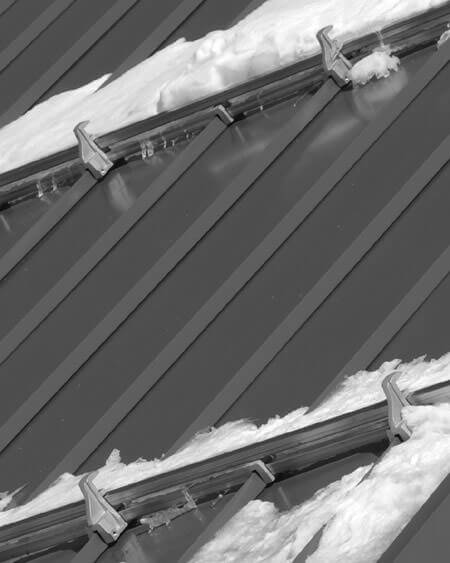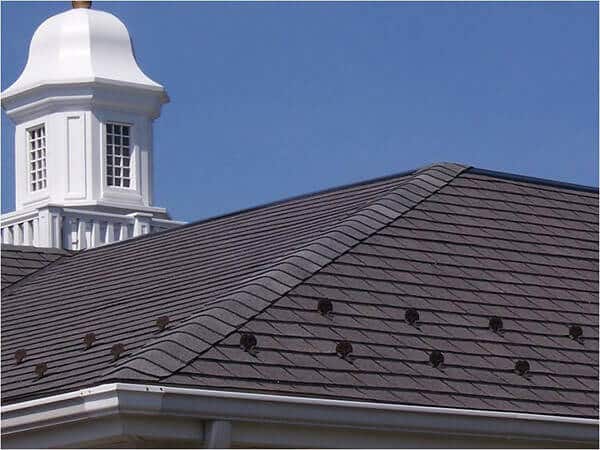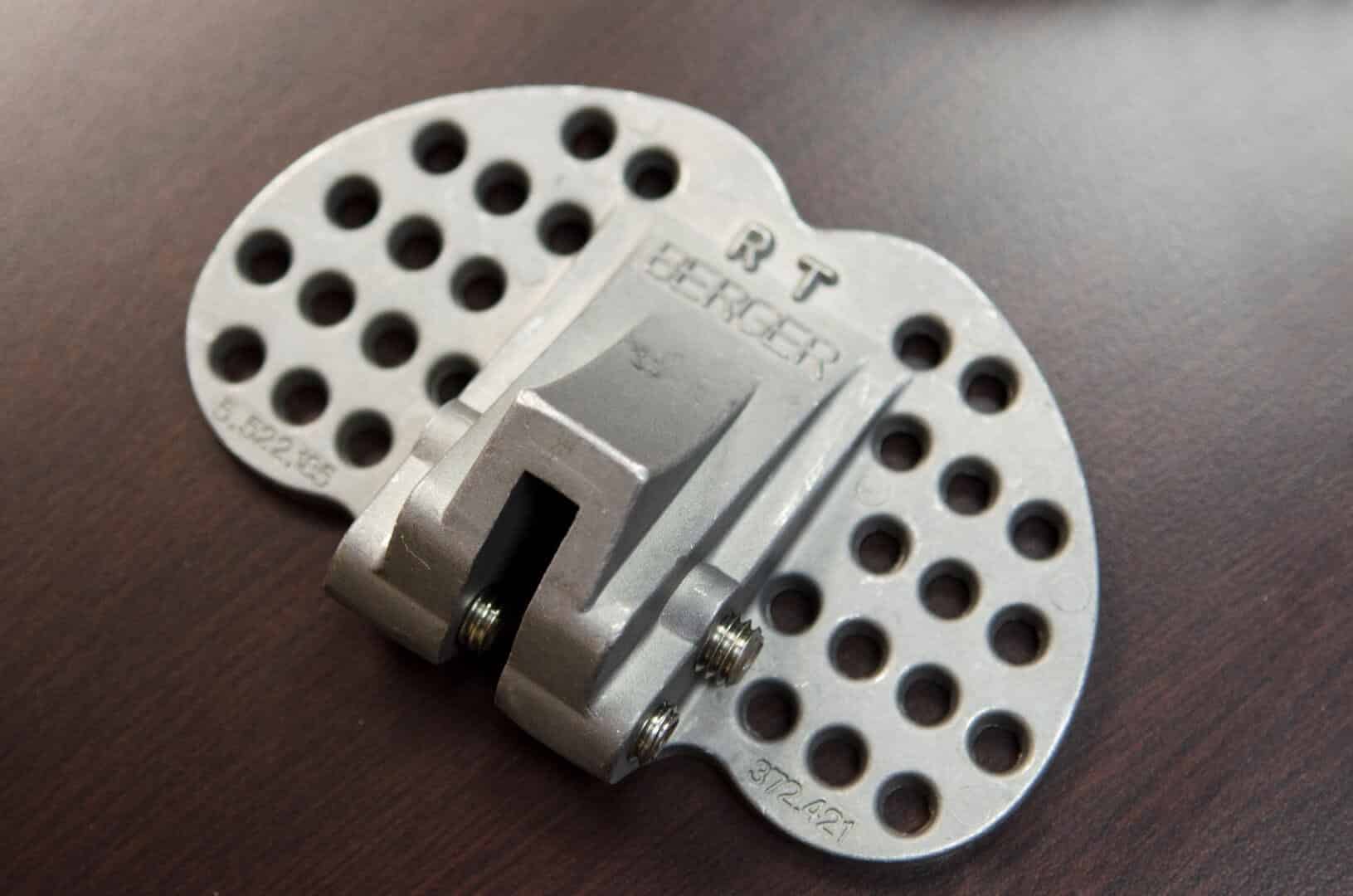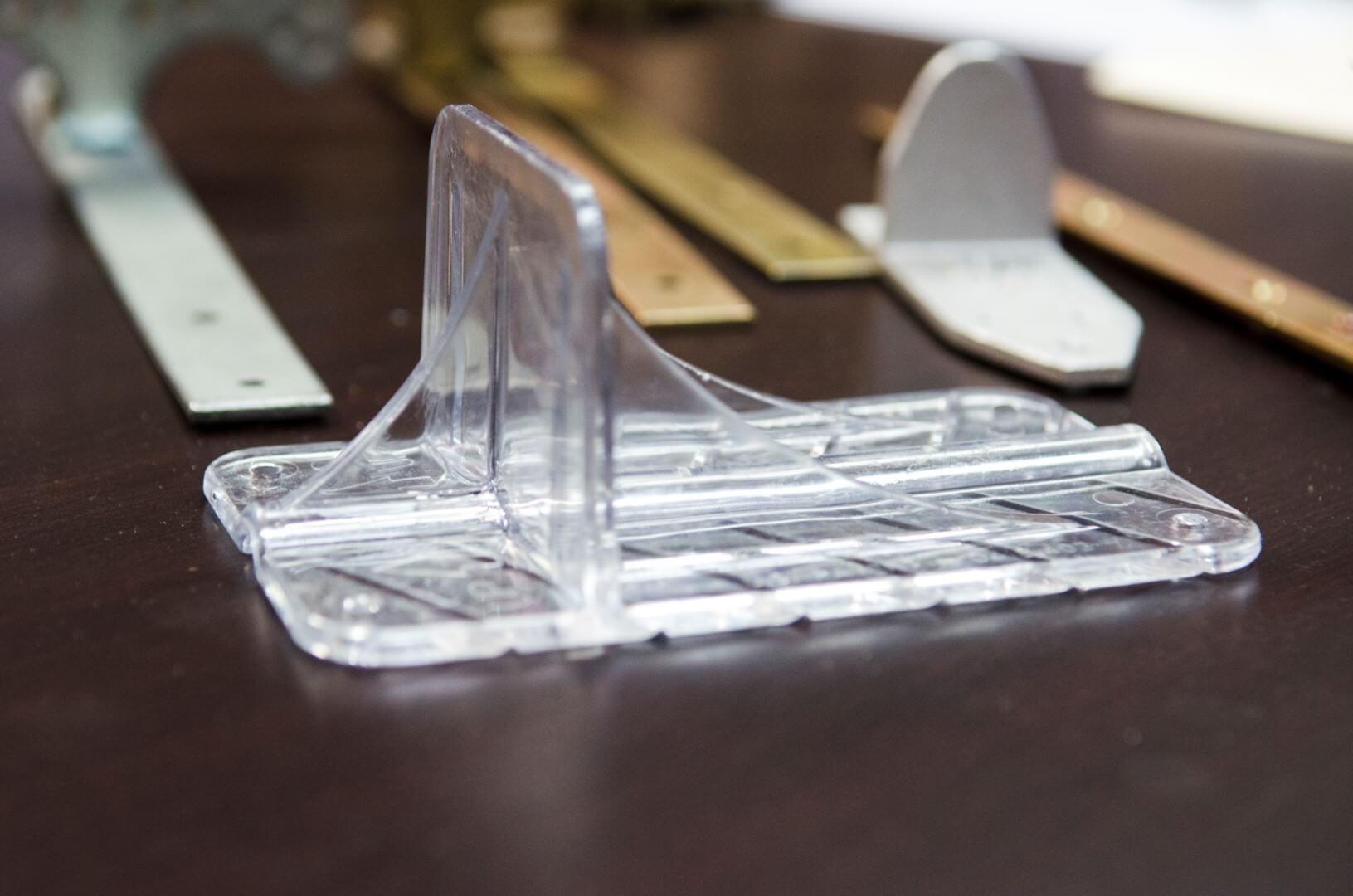What are snow guards? Snow guards come in all shapes, sizes, and styles. The function of a snow guard is to prevent snow or ice from cascading off of the roof and onto your landscaping, cars, or people below. They hold the snow on the roof so it gradually melts off from the radiant sun or other heat source.
Typically, snow guards are utilized on homes or businesses with extremely steep roofs or roofs constructed of slate, wood or metal. Asphalt roofs will typically provide enough grip to prevent the snow from sliding off the roof. As the snow accumulates in wet snow conditions, it may bond together. The bonded lump of snow will then freeze overnight creating a dangerous block of frozen ice. Even in situations of proper attic insulation, thawing beneath the roof will cause the entire roof surface to become slick enough causing the weight of the ice block to cause it to slide off the roof. The snow guard is designed to hold the snow on the roof in these conditions.




In extreme weather conditions, the snow and ice will not properly melt off the roof, but continue to build up on top of the roof. In many colder climates where snow guards are used to keep snow on the roof, a heating source will also be applied to the roof to aid in melting the snow. We do not recommend using heat tape on many roof surfaces due to roof warranties and fire hazards. However, there are alternative methods to properly melting the snow and ice.
Choosing the type of snow guard that will be installed depends on the type of roof that is on the residential or business building. Lexan snow guards provide the lowest visibility option as well as providing the most favorable solution for maintaining roof integrity and preventing corrosion. The lexan guard is attached to a metal roof using a bonding agent designed for the weather elements.
When using cedar shakes or stone tiles, aluminum is a favorable material. We use aluminum in gutter installations because it has a low corrosiveness and environmental friendly attributes. However, when it comes to metal roofs, they come in various metallic options including aluminum, copper, galvanized and galvalume steel. Using the same metallic alloy for both the roof and the snow guard is advised to prevent the corrosion challenges that will occur. The differences in the metallic compounds will cause differences in alkalinity in the materials. Sometimes an insulator can be applied to the materials to prevent this but rainwater will still cause and electrolyte or corrosive bridge to form. This will ultimately cause problems down the road.
The Brothers that just do Gutters offer snow guard installations along with a multitude of other services to help control the winter season’s adverse snow conditions. Some of the best products still require a support of many different solutions to achieve the ultimate solution. Speak to a solutionist today to find out if snow guards are right for you.

